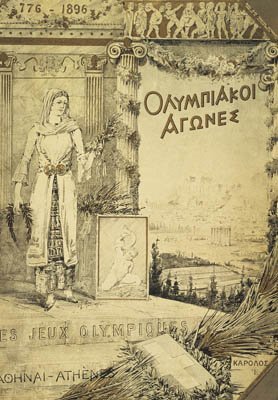Emblems and Brief Introductions of All 29 Sessions of the Olympic Games from 1896 to 2008
In the Olympic year, one should pay more attention to Olympic-related things. After all, our own understanding is too limited, and we need to recharge ourselves. Looking back at more than a hundred years of Olympic history, it is truly grand and magnificent, always embodying a kind of spirit. But I wonder if, in some future century, for various reasons (such as humans living on the moon where jumping becomes meaningless, or the general decline in human physical fitness making it impossible to break world records...), the Olympics might be discontinued? Regardless of whether the form of the Olympics will still exist, the sacred flame of Athens will never go out (unless humanity uses up the last matchstick on Earth, at which point we might consider changing the sacred flame to an electric form).
The 2004 Athens Olympics in Greece was the 28th, but even including the 29th Beijing Olympics in China in 2008, there have only been 26 editions in history (referring only to the Summer Olympics). It was only when I was collecting and organizing pictures and resources that I learned that the 6th, 12th, and 13th editions did not take place historically, all due to the same reason - war.
Emblem of the 1st Athens Olympics in Greece in 1896
Whether it was 1896 a century ago or 2004 already past, Greece in Athens chose to use the olive branch, a symbol of peace and friendship, to express their supreme understanding and respect for the Olympic Movement.
In 1896, Athens pioneered the first modern Olympic Games. Originally, the first Olympics had neither an emblem nor a poster; the image we see here is the cover of the report submitted by the Athens Olympic Committee to the International Olympic Committee, which was later used to represent this edition of the Olympics. The majestic Acropolis of Athens, the goddess Athena holding an olive branch, and the deep hoof prints are displayed before the world. The bronze-colored relief of the Olympic emblem exudes a strong ancient Greek atmosphere. The inscription "776 BC - 1896" in the upper left corner indicates the continuous relationship between the modern and ancient Olympics.
